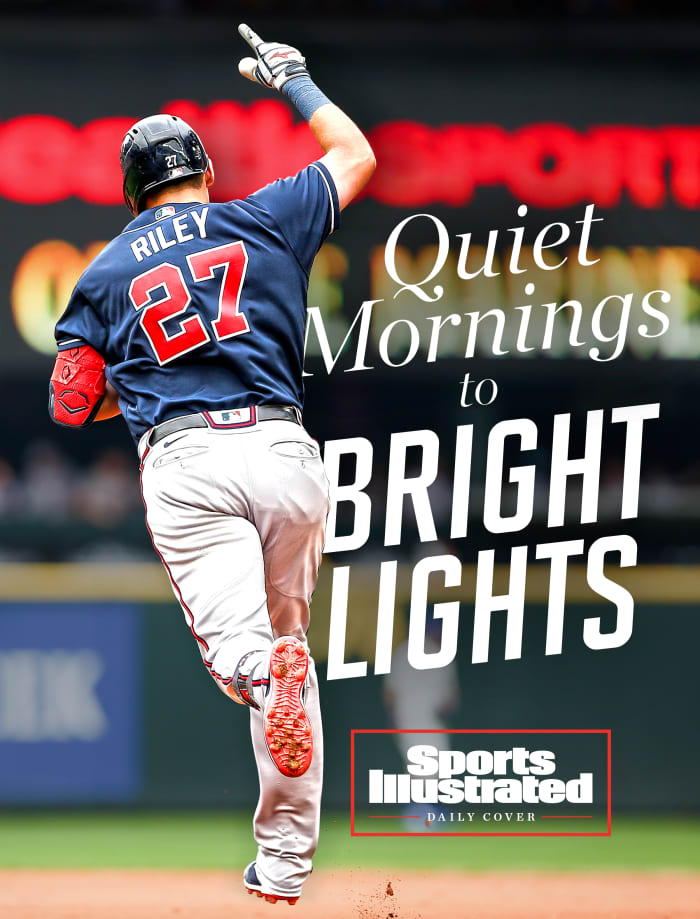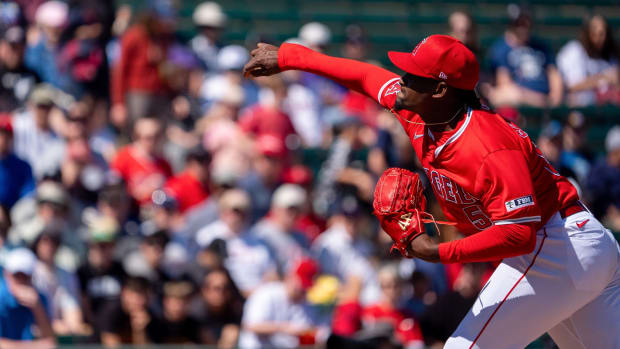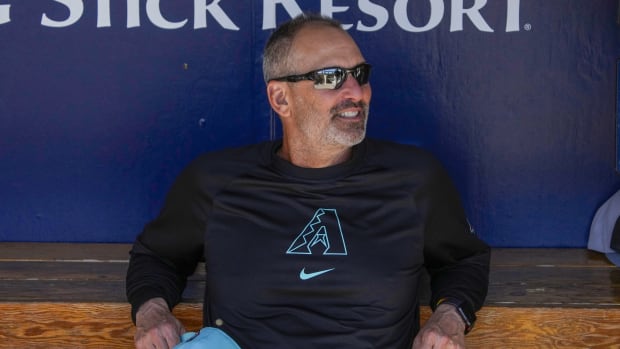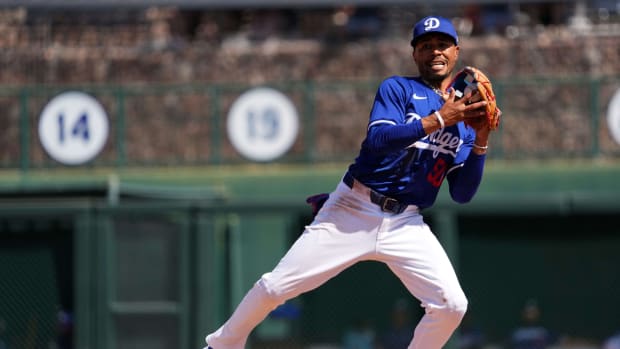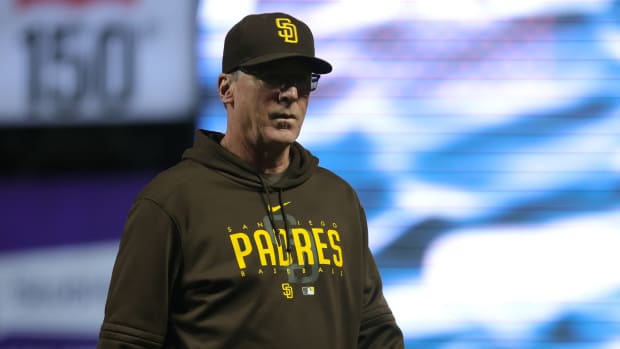How the Tiebreaker Rule Impacts the MLB Playoff Race
The most consequential series this weekend is between the top two teams in the NL East, the only division race that still isn’t decided. The Braves host the Mets in a three-game set at Truist Park in Atlanta. New York currently holds a one-game lead in the NL East, and can clinch the division—and the No. 2 seed—with a sweep this weekend.
It’s true that both teams have already secured playoff berths and will have home field advantage in their first postseason round, either the wild-card or division series, but the team that wins the NL East will have a major advantage: a first-round bye. That would allow them to reset their pitching rotation, rest players who could be a little banged up after the grind of a six-month season and, most importantly, not have to worry about an early October exit.
Entering tonight’s series opener, the Mets have a 79.3% chance of winning the NL East, according to FanGraphs, in no small part because of an additional wrinkle to this year’s postseason: There will be no one-game playoffs to decide which team wins the division, as has been the case in previous seasons. Instead, there are a series of tiebreakers that determine which team finishes ahead of the other, the first of which is a head-to-head record. The Mets have won nine of their first 16 games against the Braves, so all they have to do is win one of their final three matchups with Atlanta to take the season series and earn the tiebreaker. That’s crucial, because it gives New York an additional game cushion in the standings.
So, if the Mets win two of the three games this weekend, they would clinch as soon as Monday with either a win at home over the Nationals or a Braves loss to the Marlins. If Atlanta wins two of the three games vs. New York, the two teams technically would be tied in the standings, but essentially, the Mets would hold a one-game lead because of the tiebreaker. In this scenario, the Braves would need to win one more game than the Mets to win the NL East.
For the Braves to get the tiebreaker, they need to sweep the Mets, and that means they have to beat both New York aces, Jacob deGrom and Max Scherzer, as well as Chris Bassitt, who is a really good pitcher in his own right. It seems unlikely this will happen, even with all three games coming at home and, in order, Max Fried, Kyle Wright and Charlie Morton pitching for Atlanta.
Let’s say the Braves do win all three games, though. Everything would flip from there. They would hold the tiebreaker and have the one-game cushion. Their magic number would be one, and they could clinch the East as soon as Monday with either a win or a Mets loss. Meanwhile, the Mets would need to sweep the Nationals and need the Marlins to sweep the Braves to win the division.
Both teams have a lot at stake this weekend. The Braves certainly are under more pressure because they need to win all three games to have the upper hand; the Mets, though, have much more to lose. All of this because of the regular-season head-to-head tiebreaker.
The NL East, however, isn’t the only playoff race impacted by this tiebreaker rule. The Padres can clinch one of the final two NL wild-card spots as soon as tomorrow night because they own the head-to-head advantage over the Brewers. Right now, San Diego is three games up on Milwaukee, with both teams having six to play. But, because of the tiebreaker, any combination of three Padres wins or Brewers losses secures the Friars a playoff berth.
This wouldn’t necessarily mean the end for Milwaukee, though. The Phillies are in shambles right now, having lost five straight games and 10 of their last 13, and their lead for the final wild card is down to just a half game. Except, there’s that tiebreaker again. Philadelphia holds the advantage, so its lead is effectively 1.5 games.
Quick programming note here before we continue. This is the last weekly edition of the Five-Tool Newsletter until after the World Series. Beginning next Friday, we will be sending the newsletter out every day, as we did when he launched at the start of last year’s postseason.
We’re coming up on our first anniversary, so I just want to say thanks to all of you who have signed up over the last year. If you’re reading this edition online, I’d encourage you to subscribe to get this newsletter delivered directly to your email. It’s free!
As always, if you have any questions or comments for our team, send a note to mlb@si.com.
1. THE OPENER
“Ron Washington joined the Braves in 2017, signing on as third base coach after a long, winding path through the league and across the game. He brought his morning routine with him.
“This is how that looked in spring training. His infielders had to be on the diamond each day at 7:30 a.m. Which meant that, starting around 7 a.m., their coach could enjoy a cup of coffee in the dugout in peace. This was about as strong a guarantee as Washington could get: At that hour? No one would bother the veteran coach. Sure, every organization had a few guys who liked to get to the clubhouse early, and he’d welcome any company to join him for a cup. But there was no one who would ask him for anything. He wouldn’t be approached by a player who wanted to run his famous infield drills or have a serious discussion about something or, hell, get ready on the field at all. No one did any of that before 7:30 a.m.
“Except for Austin Riley.”
That’s how Emma Baccellieri begins this morning’s Daily Cover story, a wonderful look at Atlanta third baseman Austin Riley’s development from early-morning teenage prospect into one of the game’s premier power hitters. It’s a great read heading into this weekend’s crucial three-game series between the defending champions and the Mets. You can read her profile of Riley in its entirety below.
How Austin Riley Became the Cornerstone of the Braves’ Core by Emma Baccellieri
After winning a World Series and signing a 10-year extension, the third baseman is emerging as the anchor of a young, enviably talented Atlanta roster.
2. ICYMI
Let’s run through some of our other great SI baseball stories from this week.
Aaron Judge Makes History, but 61 Is Not the Record by Stephanie Apstein, Emma Baccellieri, Matt Martell and Michael Rosenberg
No matter what you think of the Steroid era, Barry Bonds is the holder of the single-season home run record. But what the Yankees star has accomplished is still worth celebrating.
Ranking the Playoff Rotations for MLB’s Contending Teams by Will Laws
Astros or Mets? Yankees or Dodgers? Here’s how the starting staffs compare among the potential postseason clubs.
How the Phillies Can Avoid Their Typical Late-Season Collapse by Tom Verducci
Over the years, Philadelphia has endured plenty of brutal September stretches. Here’s why this team won’t suffer the same fate.
The Yankees Are Desperate for Aaron Judge to Hit No. 62 by Stephanie Apstein
Twice last week New York fans have been in the unusual position of rooting against their team. The players understand.
Albert Pujols’s 700th Home Run Is the Apex of His Defiant Final Year by Tom Verducci
The Cardinals legend has returned to greatness in the last three months of his career. It’s an exit that baseball almost never allows.
3. WORTH NOTING from Matt Martell
Let’s pour one out for the Orioles here, whose valiant, improbable playoff push has all but officially come to an end. To make the playoffs, they need to win all six of their remaining games this season—they have three games against the Yankees in the Bronx before finishing with three at home vs. the Blue Jays—and they need either the Mariners or the Rays to lose all of their remaining games.
Still, even though they came up short this year, the O’s have a bright future ahead of them. Catcher Adley Rutschman and infielder Gunnar Henderson each played well in their debut seasons, and there are more top prospects on the way next season, among them starting pitchers Grayson Rodriguez and DL Hall.
I’ve been saying this since the O’s emerged in the playoff race a few months ago that they are this year’s version of the 2021 Mariners, a young, talented team that jelled ahead of schedule but fell short of the postseason. Seattle is going to make the playoffs this season, and Baltimore has a great shot to be there in ’23.
Speaking of the Mariners, when they officially clinch a postseason berth—which could happen as soon as tonight with a win over the A’s or an Orioles loss—they will end their 21-year playoff drought.
4. W2W4 from Nick Selbe
Are the Phillies really going to blow this? With five straight losses and 10 in their last 13 games, it sure looks like it. A four-game set against the woeful Nationals is as good a lifeline as any, and they’ll wrap up the season with three in Houston. How the Astros decide to rest or play their starters now becomes a crucial domino in the battle for the National League’s final playoff spot. The Brewers, meanwhile, wrap up the season against the Marlins and Diamondbacks.
The main event this weekend, though, is clearly the three-game showdown between the Braves and Mets that will all but officially determine the NL East title. The pitching matchups are juicy: Max Fried vs. Jacob deGrom on Friday, Kyle Wright vs. Max Scherzer on Saturday and Charlie Morton vs. Chris Bassitt on Sunday. Atlanta is one game back coming into the weekend, so expect Truist Park to be rocking.
Oh, and I think there’s something important going on at Yankee Stadium that you may or may not have already heard about …
5. THE CLOSER from Emma Baccellieri
I hope by now you have seen the footage of poor Richard Bleier getting called for three balks in one at bat Tuesday. (Three! For what is essentially his normal pitching motion!) The Marlins reliever is the first pitcher on record to balk three times in a single plate appearance. Which makes it a good moment to reflect on the strangeness of the rule—I’ve always found the balk rule to be lacking, given the scattershot, capricious way it gets enforced (or not). It all seems so vague and open to interpretation: Can anyone really demonstrate the line between balk and nonbalk? But the rule itself is actually incredibly specific! The MLB rule book details 13 particular motions that should be classified as a balk ...
… and now that I’ve read them all, I feel like I have even less of an understanding of what should really constitute a balk. No wonder things got so out of hand when they tried to ramp up enforcement in 1988. Happy Friday!
That’s all from us today. We’ll be back in your inbox next Friday. In the meantime, share this newsletter with your friends and family, and tell them to sign up at SI.com/newsletters. If you have any questions or comments, shoot us an email at mlb@si.com.

































